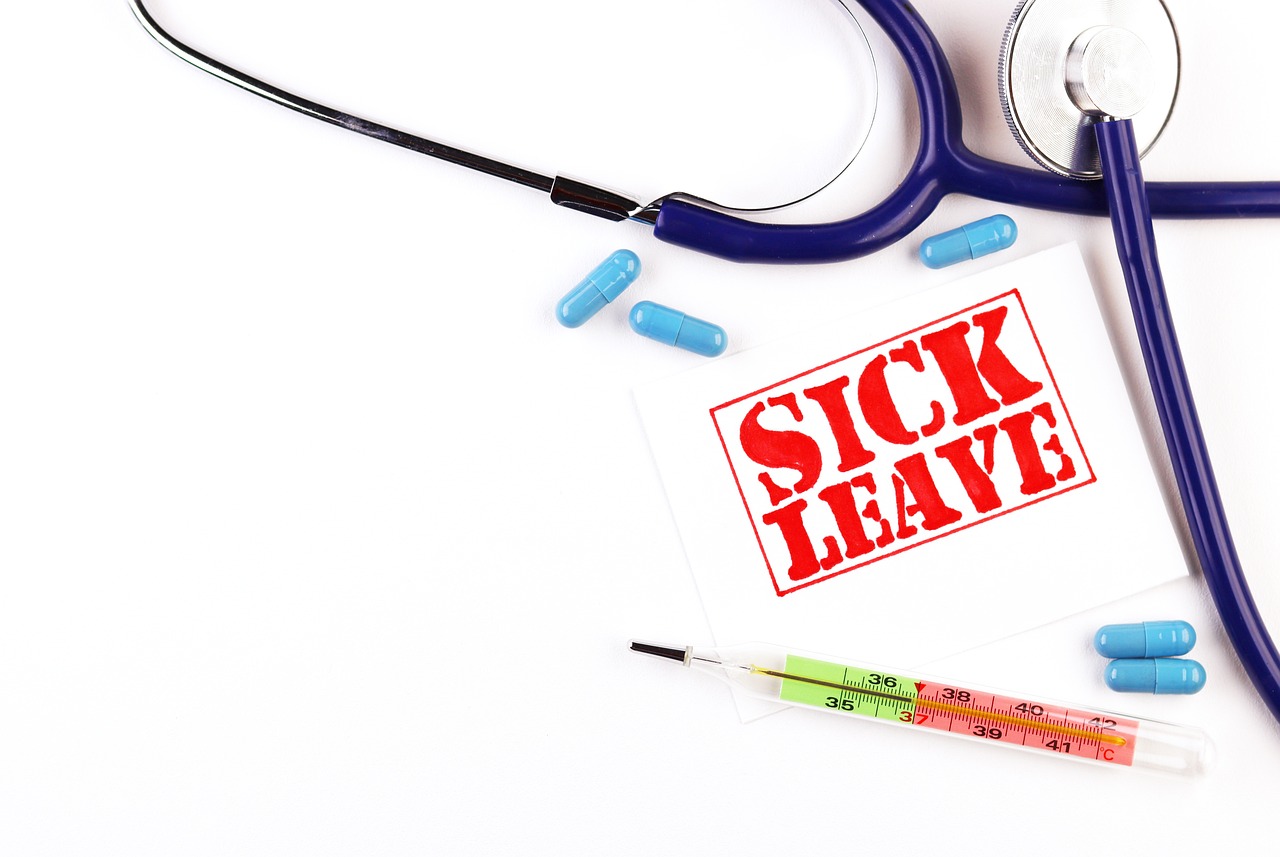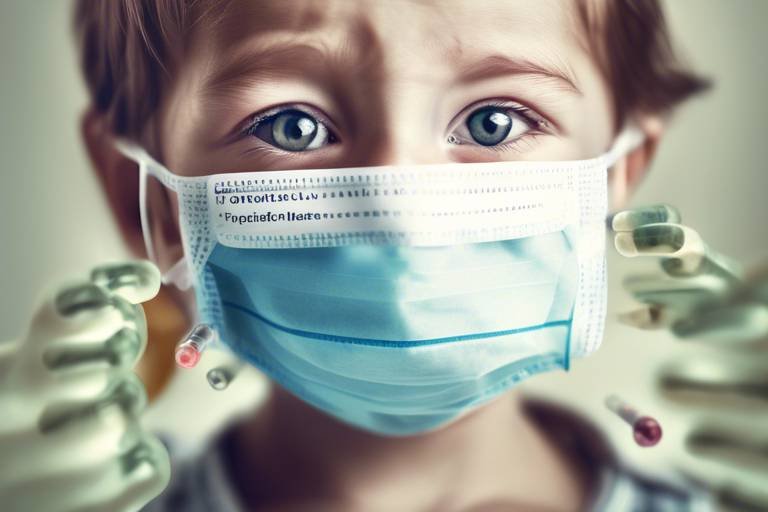The Growing Safety Concern of Antibiotic Resistance
As we navigate through the complexities of modern medicine, one alarming issue looms larger than ever: antibiotic resistance. This phenomenon is not just a buzzword; it’s a serious threat that can potentially undermine decades of medical advancements. Imagine a world where common infections become untreatable, where routine surgeries carry the risk of life-threatening complications due to resistant bacteria. Sounds like a scene from a dystopian movie, right? But the reality is that we are inching closer to this frightening scenario every day.
Antibiotic resistance occurs when bacteria evolve and adapt in ways that render our most effective medications useless. It's a bit like a game of hide and seek, where the bacteria are clever enough to find new hiding spots, making it increasingly difficult for our antibiotics to reach them. The implications of this resistance are staggering, not just for individual patients but for public health systems globally. Infections that were once easily treatable are now leading to longer hospital stays, higher medical costs, and increased mortality rates. This is a crisis that knows no borders; it affects communities worldwide, from bustling cities to remote villages.
So, what can we do about this? The first step is understanding the mechanisms behind antibiotic resistance. Bacteria can acquire resistance through various means, such as genetic mutations or by obtaining resistance genes from other bacteria. This adaptability is what makes them formidable opponents in the fight against infections. Furthermore, the misuse and over-prescription of antibiotics only accelerate this process. When antibiotics are used unnecessarily, they not only fail to help the patient but also contribute to the broader problem of resistance.
To tackle this growing concern, we need a multi-faceted approach that involves healthcare providers, patients, and policymakers alike. Education plays a crucial role here. Patients must understand the importance of adhering to prescribed treatments, while healthcare providers need to be vigilant about when and how they prescribe antibiotics. Additionally, agricultural practices that contribute to antibiotic resistance must be scrutinized and modified. The use of antibiotics in livestock is a significant factor in the emergence of resistant strains, which can ultimately impact human health.
In conclusion, the threat of antibiotic resistance is a pressing issue that demands immediate attention. By fostering awareness and implementing effective strategies, we can combat this growing safety concern and safeguard the future of healthcare. Remember, the next time you’re prescribed antibiotics, it’s not just about treating an infection; it’s about preserving the effectiveness of these vital medications for generations to come.
- What is antibiotic resistance? Antibiotic resistance occurs when bacteria change in response to the use of medications, making those medications less effective.
- What causes antibiotic resistance? Causes include over-prescription of antibiotics, misuse in agriculture, and patients not completing their prescribed courses.
- How can we prevent antibiotic resistance? Prevention strategies include responsible prescribing, patient education, and reducing antibiotic use in agriculture.
- Why is antibiotic resistance a global issue? It transcends borders as resistant bacteria can spread through travel, trade, and environmental factors, affecting healthcare systems worldwide.

Understanding Antibiotic Resistance
This article explores the increasing threat posed by antibiotic resistance, its implications for public health, and strategies to mitigate this global crisis affecting healthcare systems worldwide.
Antibiotic resistance is a complex and alarming phenomenon that occurs when bacteria evolve and develop the ability to withstand the effects of medications designed to kill them. Imagine a tiny army of bacteria that, instead of surrendering to the antibiotics, learns to adapt and fight back. This adaptation can make standard treatments ineffective, leading to prolonged illnesses, increased healthcare costs, and a greater risk of disease spread. The mechanisms behind antibiotic resistance are multifaceted and often involve genetic mutations or the acquisition of resistance genes from other bacteria. These changes can occur through various processes, such as natural selection, where the strongest bacteria survive and multiply.
To truly grasp the implications of antibiotic resistance, we must consider its impact on infection control. For instance, when a common infection becomes resistant to treatment, it can lead to longer hospital stays and more complicated procedures. In a healthcare setting, this can create a ripple effect, straining resources and limiting the availability of effective treatments for other patients. The World Health Organization has highlighted antibiotic resistance as one of the top ten global public health threats facing humanity, underscoring the urgency of addressing this issue.
Furthermore, antibiotic resistance doesn't just affect individuals; it poses a significant threat to public health systems worldwide. Infections that were once easily treatable can become deadly, leading to increased mortality rates and a resurgence of diseases that were previously under control. The implications extend beyond immediate health concerns; they also encompass the economic burden on healthcare systems, which must allocate more resources to manage resistant infections.
Understanding antibiotic resistance requires awareness of both its causes and consequences. As we delve deeper into this topic, we will explore the various factors contributing to the rise of resistance and the essential steps needed to combat this growing threat. It’s crucial for everyone—healthcare providers, patients, and policymakers—to understand the role they play in this battle. By fostering a collective effort, we can work towards a future where antibiotics remain effective tools in our healthcare arsenal.
- What is antibiotic resistance? Antibiotic resistance occurs when bacteria change and become resistant to the drugs that are supposed to kill them, making infections harder to treat.
- What causes antibiotic resistance? Causes include over-prescription of antibiotics, misuse in agriculture, and lack of adherence to prescribed treatment regimens.
- How can we prevent antibiotic resistance? Preventing antibiotic resistance involves responsible prescribing practices, patient education, and improved infection control measures.
- Why is antibiotic resistance a global concern? It transcends borders, affecting healthcare systems worldwide and leading to increased healthcare costs and morbidity rates.

Causes of Antibiotic Resistance
Antibiotic resistance is a complex issue that arises from a variety of interrelated factors. Understanding these causes is crucial in addressing this growing threat to public health. One of the primary contributors is the **over-prescription of antibiotics** by healthcare providers. When antibiotics are prescribed for conditions that do not require them, such as viral infections, it not only fails to help the patient but also creates an environment where bacteria can adapt and develop resistance. This misuse is often driven by the desire for quick solutions in a healthcare setting where patients expect immediate relief.
Another significant factor is the **misuse of antibiotics in agriculture**. Farmers often use antibiotics not only to treat sick animals but also to promote growth in healthy livestock. This practice leads to the development of resistant bacteria that can be transmitted to humans through the food supply. The World Health Organization has raised alarms about this issue, emphasizing that antibiotic use in agriculture must be strictly regulated to protect human health.
Furthermore, **lack of patient adherence** to prescribed antibiotic regimens plays a critical role. When patients do not complete their courses of antibiotics, it can leave behind a population of bacteria that are more resistant. For example, if a patient feels better after a few days and stops taking the medication, the bacteria that survive may be the ones that have developed resistance, leading to more severe infections in the future.
In addition to these factors, there are also broader systemic issues at play. Limited access to healthcare in certain regions can lead to the **overuse of antibiotics** as a first-line treatment due to a lack of diagnostic capabilities. In many low-resource settings, healthcare providers may not have the tools to accurately diagnose infections, leading them to prescribe antibiotics as a precautionary measure. This not only contributes to resistance but also places an additional burden on already strained healthcare systems.
To summarize, the causes of antibiotic resistance can be categorized as follows:
- Over-prescription of antibiotics: Unnecessary prescriptions lead to increased resistance.
- Misuse in agriculture: Use of antibiotics in livestock promotes resistant bacteria.
- Lack of patient adherence: Not completing prescribed courses enables resistant strains to thrive.
- Limited access to healthcare: Inadequate diagnostic tools result in overuse of antibiotics.
Each of these factors not only contributes to the rise of antibiotic resistance but also highlights the need for a multifaceted approach to tackle this global crisis. Addressing these issues requires collaboration among healthcare providers, policymakers, and the public to foster a culture of responsible antibiotic use.
1. What is antibiotic resistance?
Antibiotic resistance occurs when bacteria evolve to resist the effects of medications that once effectively treated them, making infections harder to control.
2. Why is antibiotic resistance a concern?
It poses a significant threat to public health, leading to longer hospital stays, higher medical costs, and increased mortality.
3. How can we prevent antibiotic resistance?
Preventing antibiotic resistance involves responsible prescribing practices, patient education on adherence, and reducing antibiotic use in agriculture.
4. What role do patients play in combating antibiotic resistance?
Patients can help by following their healthcare provider's instructions, completing prescribed courses, and not demanding antibiotics for viral infections.

Over-Prescription of Antibiotics
The over-prescription of antibiotics is a pressing issue that has become a significant contributor to the growing problem of antibiotic resistance. Imagine walking into a doctor's office with a common cold, only to walk out with a prescription for antibiotics. Sounds familiar, right? This scenario is all too common, and it highlights a crucial gap in understanding the appropriate use of these powerful medications. Antibiotics are designed to fight bacterial infections, but they are often prescribed for viral infections, which they cannot treat. This misuse not only fails to help the patient but also accelerates the development of resistant bacteria.
One of the primary reasons for over-prescription is the pressure that healthcare providers face from patients who expect antibiotics for every ailment. Patients may feel that they are not receiving adequate care if they leave without a prescription, leading to a cycle where doctors feel compelled to prescribe antibiotics even when they are not needed. This dynamic creates a dangerous precedent that undermines the effectiveness of antibiotics for future generations.
To truly grasp the impact of over-prescription, we must consider the statistics. According to the Centers for Disease Control and Prevention (CDC), nearly 30% of antibiotics prescribed in outpatient settings are unnecessary. This staggering figure underscores the urgent need for improved prescribing practices. Healthcare providers must be equipped with the knowledge and tools to differentiate between bacterial and viral infections, ensuring that antibiotics are prescribed only when absolutely necessary.
Furthermore, the consequences of over-prescription extend beyond individual patients. They ripple through communities, contributing to the emergence of antibiotic-resistant strains of bacteria that can spread rapidly. In hospitals, these resistant strains can lead to longer hospital stays, higher medical costs, and increased mortality rates. The challenge is compounded by the fact that once resistance develops, it can take years for new antibiotics to be developed and approved, leaving healthcare systems vulnerable in the meantime.
Addressing the issue of over-prescription requires a multi-faceted approach. Education plays a pivotal role—both for healthcare providers and patients. Providers need to be aware of the latest guidelines and best practices for antibiotic prescribing. Additionally, patients must understand that antibiotics are not a cure-all and that their misuse can have serious consequences. By fostering a culture of responsible antibiotic use, we can begin to turn the tide against antibiotic resistance.
In conclusion, the over-prescription of antibiotics is a critical factor in the rise of antibiotic resistance. By recognizing the problem and implementing strategies to combat it, we can protect the efficacy of these vital medications for future generations. It is essential for healthcare providers to adopt more judicious prescribing practices and for patients to engage in open conversations about their treatment options. Together, we can work towards a healthier future where antibiotics remain effective tools in our medical arsenal.

Impact on Patients
The impact of antibiotic over-prescription on patients is profound and multifaceted. When antibiotics are prescribed unnecessarily, patients not only face the risk of experiencing adverse effects but also contribute to a larger public health crisis. Imagine being given a powerful medication designed to fight infections, yet it does nothing for your condition. This scenario is not just inconvenient; it can lead to serious health complications. For instance, taking antibiotics when they aren’t needed can disturb the natural balance of bacteria in the body, leading to issues such as diarrhea, nausea, and even more severe complications like Clostridium difficile infections.
Moreover, the more we use antibiotics, the more bacteria evolve to resist them. This means that when patients genuinely need antibiotics for serious infections, they may find that their treatment options are limited. The concept of antibiotic resistance can be likened to a game of chess where bacteria are the players adapting their strategies to outsmart the medications meant to defeat them. As resistance increases, the effectiveness of these drugs diminishes, leading to longer hospital stays, the need for more expensive medications, and in some cases, higher mortality rates. A study by the Centers for Disease Control and Prevention (CDC) estimates that at least 2.8 million people in the U.S. are infected with antibiotic-resistant bacteria each year, resulting in over 35,000 deaths. This statistic underscores the serious implications for patient health.
Furthermore, the emotional and psychological toll on patients cannot be ignored. Patients who find themselves in a cycle of repeated infections, due to ineffective treatments, often experience anxiety and depression. They may question their health, trust in healthcare providers, and the efficacy of treatments. This can lead to a vicious cycle where patients may seek more antibiotics out of desperation, further fueling the resistance problem.
In light of these challenges, it's crucial for both patients and healthcare providers to engage in open conversations about the necessity of antibiotics. Patients should feel empowered to ask questions and express concerns when prescribed antibiotics. On the other hand, healthcare providers must strive to educate patients about the risks associated with unnecessary antibiotic use. By fostering a collaborative approach, we can minimize the impact of antibiotic over-prescription and work towards a healthier future.
- What are the signs that I may not need antibiotics?
Common signs include viral symptoms like a runny nose or sore throat, which typically do not require antibiotic treatment. - How can I discuss antibiotic use with my doctor?
Be open about your concerns and ask questions regarding the necessity of the prescription and alternative treatment options. - What should I do if I am prescribed antibiotics but feel they are unnecessary?
Seek a second opinion or consult your healthcare provider to discuss your concerns and explore other treatment options.

Role of Healthcare Providers
The role of healthcare providers in combating antibiotic resistance is nothing short of critical. As frontline defenders against infections, these professionals wield immense power in determining how antibiotics are prescribed and used. With great power, however, comes great responsibility. It’s essential for healthcare providers to remain vigilant and informed about the implications of their prescribing habits. After all, each prescription written can either contribute to the solution or exacerbate the problem of antibiotic resistance.
One of the primary responsibilities of healthcare providers is to ensure that antibiotics are prescribed only when absolutely necessary. This means taking the time to accurately diagnose conditions and to distinguish between bacterial and viral infections. For instance, the common cold or flu, which are caused by viruses, do not respond to antibiotics, yet many patients still expect these prescriptions. Educating patients about the differences between these infections can help reduce the demand for unnecessary antibiotics.
Moreover, healthcare providers must be aware of the latest guidelines and recommendations regarding antibiotic use. This involves ongoing education and training, as the landscape of medicine is constantly evolving. By staying updated, providers can make informed decisions that align with best practices. They should also engage in discussions with their peers, sharing insights and strategies to minimize the overuse of antibiotics in their respective practices.
Another significant aspect of their role is to foster open communication with patients. When patients understand the reasons behind a healthcare provider's decision not to prescribe antibiotics, they are more likely to adhere to the treatment plan. This can be achieved through:
- Clear explanations about the nature of their illness.
- Information on the potential side effects of antibiotics.
- Emphasis on alternative treatments or supportive care that can aid in recovery.
Additionally, healthcare providers must be advocates for responsible antibiotic use within their communities. This can include participating in public health campaigns aimed at promoting awareness about antibiotic resistance. By taking a stand, they can help shape public perception and encourage responsible behaviors among patients and the general public.
It’s also essential for healthcare providers to collaborate with pharmacists and other healthcare professionals. This interprofessional teamwork can enhance patient care and ensure that antibiotics are used appropriately. For example, pharmacists can provide valuable insights on medication interactions and potential side effects, while healthcare providers can ensure that patients understand their treatment regimens.
In summary, the role of healthcare providers in the fight against antibiotic resistance is multifaceted and crucial. By practicing responsible prescribing, educating patients, staying informed, and advocating for public health, they can significantly impact the trajectory of antibiotic resistance. Each action they take contributes not just to individual patient outcomes but also to the broader goal of preserving the efficacy of antibiotics for future generations.
- What is antibiotic resistance?
Antibiotic resistance occurs when bacteria evolve to resist the effects of medications, making standard treatments ineffective.
- How can healthcare providers help reduce antibiotic resistance?
By prescribing antibiotics only when necessary, educating patients, and staying updated on guidelines, healthcare providers can significantly reduce antibiotic resistance.
- Why is patient education important in combating antibiotic resistance?
Educated patients are more likely to understand when antibiotics are necessary and adhere to treatment plans, reducing unnecessary use.
- What role does agriculture play in antibiotic resistance?
The use of antibiotics in livestock can contribute to the development of resistant bacteria that may affect human health.

Antibiotics in Agriculture
When we think about antibiotics, our minds often drift to hospitals and sick patients, but did you know that these powerful medications are also widely used in agriculture? It's true! Antibiotics are administered to livestock to promote growth and prevent disease, but this practice has far-reaching implications that affect not only animals but also human health and the environment. Imagine a world where the very drugs designed to save lives become ineffective due to their overuse in farming. Sounds alarming, right? Well, it is!
The use of antibiotics in agriculture can be likened to giving a child candy for every good deed. While it might seem like a reward, it can lead to serious consequences, such as developing a dependency or even health problems. Similarly, when farmers use antibiotics routinely, it creates an environment where bacteria can evolve and become resistant. This means that when humans get sick from these resistant bacteria, the antibiotics that once worked effectively may no longer do the job.
One of the primary reasons for the use of antibiotics in agriculture is to prevent disease in crowded conditions, such as those found in factory farms. However, this practice can lead to the emergence of resistant bacteria that can transfer from animals to humans through various pathways, including:
- Consumption of undercooked meat
- Direct contact with animals
- Contaminated water sources
In fact, studies have shown that resistant bacteria can persist in the environment long after antibiotic use has ceased. This raises a critical question: Are we prioritizing short-term gains in agricultural productivity over long-term health outcomes for our communities? The answer seems to lean towards a resounding "no." The consequences of antibiotic misuse in agriculture are not just a concern for farmers; they ripple through to our healthcare systems, increasing the burden of treating infections that are becoming harder to cure.
To shed light on the scale of this issue, let's take a look at some statistics:
| Year | Antibiotic Use in Agriculture (in tons) | Human Health Impact (estimated infections) |
|---|---|---|
| 2015 | 50,000 | 2 million |
| 2020 | 70,000 | 2.8 million |
| 2023 | 85,000 | 3.5 million |
As the table illustrates, the increasing use of antibiotics in agriculture correlates with a rise in infections resistant to treatment. This alarming trend underscores the urgent need for reform in how we approach antibiotic use in farming. Responsible practices, such as reducing reliance on antibiotics and implementing better hygiene and management practices, can help mitigate this issue.
In conclusion, the use of antibiotics in agriculture poses a significant challenge not only to the health of livestock but also to the well-being of humans. As consumers, we must advocate for change and support sustainable agricultural practices that prioritize health over productivity. After all, the health of our communities is intertwined with the choices made in the fields. Together, we can cultivate a future where antibiotics remain effective for generations to come.
Q: Why are antibiotics used in agriculture?
A: Antibiotics are used in agriculture primarily to promote growth and prevent disease in livestock, especially in crowded farming conditions.
Q: How does antibiotic use in agriculture affect human health?
A: The overuse of antibiotics in livestock can lead to the development of antibiotic-resistant bacteria, which can be transmitted to humans through food, direct contact, or environmental exposure.
Q: What can be done to reduce antibiotic resistance from agriculture?
A: Implementing responsible antibiotic use, improving animal management practices, and advocating for stricter regulations can help reduce the risk of antibiotic resistance stemming from agriculture.

Global Impact of Antibiotic Resistance
Antibiotic resistance is not just a local issue; it’s a global crisis that affects healthcare systems around the world. Imagine waking up one day to find that the medications that have kept infections at bay for decades are suddenly useless. This is the reality we face as bacteria evolve and adapt, rendering our most effective treatments ineffective. The implications are staggering, affecting not only individual health outcomes but also the very fabric of public health systems.
The rise of antibiotic resistance leads to longer hospital stays, higher medical costs, and an increase in mortality. According to the World Health Organization (WHO), it is estimated that by 2050, antibiotic resistance could cause up to 10 million deaths annually, surpassing deaths caused by cancer. This statistic alone underscores the urgent need for action. The economic burden associated with antibiotic resistance is equally alarming, with healthcare systems facing increased costs due to prolonged treatments and the need for more expensive alternative medications.
Moreover, antibiotic resistance does not recognize borders. An infection that arises in one part of the world can easily spread to another, making it a truly international concern. The interconnectedness of our global society means that resistance can affect travel, trade, and even international relations. Countries must work together to combat this issue, sharing data and strategies to ensure that effective treatments remain available.
One of the most pressing challenges is the economic impact of antibiotic resistance. It leads to increased healthcare costs due to:
- Longer hospital stays
- More intensive care requirements
- Increased need for expensive second-line treatments
The financial implications can be devastating for individuals and healthcare systems alike. A report from the European Centre for Disease Prevention and Control indicates that antibiotic resistance could lead to an economic burden of over €1.5 billion annually in Europe alone. This figure highlights the need for immediate and effective public health strategies.
In addition to economic consequences, antibiotic resistance poses significant public health risks. The potential for outbreaks of resistant infections can lead to:
- Increased morbidity and mortality rates
- Strain on healthcare resources
- Challenges in performing routine surgeries and chemotherapy
As we face these challenges, it becomes clear that a coordinated global response is essential. Countries must implement public health initiatives focused on:
- Promoting responsible antibiotic use
- Enhancing infection prevention measures
- Investing in research for new antibiotics and alternatives
In conclusion, the global impact of antibiotic resistance is profound and far-reaching. It affects not only individual health but also the overall health of populations and economies. As we navigate this crisis, it’s crucial for governments, healthcare providers, and the public to unite in efforts to combat antibiotic resistance. Only through collaboration and commitment can we hope to preserve the effectiveness of antibiotics for future generations.
1. What is antibiotic resistance?
Antibiotic resistance occurs when bacteria evolve to resist the effects of medications, making standard treatments ineffective.
2. Why is antibiotic resistance a global concern?
It affects healthcare systems worldwide, leading to increased mortality rates, healthcare costs, and the potential for widespread outbreaks.
3. What are the main causes of antibiotic resistance?
The main causes include over-prescription of antibiotics, misuse in agriculture, and lack of adherence to treatment protocols by patients.
4. What can be done to combat antibiotic resistance?
Effective strategies include promoting responsible antibiotic use, improving infection prevention measures, and investing in research for new treatments.

Economic Consequences
The economic impact of antibiotic resistance is nothing short of staggering. It's not just a health issue; it's a financial crisis that affects individuals, healthcare systems, and entire economies. When antibiotics become ineffective, the costs associated with treating infections rise dramatically. Hospitals face increased expenses due to longer patient stays, the need for more expensive medications, and additional interventions required to manage resistant infections. Can you imagine the financial strain on a family when a simple infection turns into a prolonged battle?
According to recent studies, the direct costs of antibiotic resistance in the United States alone are estimated to be around $20 billion annually. This figure includes hospital stays, outpatient visits, and costs associated with lost productivity. But the impact goes beyond just direct costs. The indirect costs, such as loss of productivity and the economic burden on families, can elevate the total to an alarming $35 billion to $50 billion each year. It’s like a ripple effect, where one small issue can lead to a wave of financial repercussions.
To put it into perspective, let's break down some of the key economic consequences:
- Increased Healthcare Spending: As antibiotic resistance grows, healthcare providers often resort to more expensive treatment options, which drives up overall healthcare costs.
- Loss of Productivity: When individuals fall ill due to resistant infections, they may miss work, leading to lost wages and decreased productivity.
- Economic Strain on Families: Families facing prolonged illness due to antibiotic-resistant infections may struggle financially, especially if they lack adequate health insurance.
Moreover, the economic burden is not limited to just the healthcare sector. Industries reliant on a healthy workforce, such as agriculture and manufacturing, can experience significant disruptions. The World Bank estimates that antibiotic resistance could push up to 24 million people into extreme poverty by 2030. This is a stark reminder of how intertwined our health systems and economies are, and how a crisis in one can lead to a catastrophe in the other.
In light of these challenges, it's crucial for governments and organizations worldwide to take proactive measures. Investing in research for new antibiotics, improving infection prevention strategies, and promoting responsible use of existing antibiotics are all essential steps to mitigate the economic fallout of antibiotic resistance. After all, prevention is not just better than cure; it's also far more cost-effective.
As we navigate this complex issue, the question remains: how can we work together to address antibiotic resistance and its economic consequences? The answer lies in collaboration, education, and a commitment to changing the way we think about antibiotics. Only by acknowledging the gravity of this situation can we hope to forge a path towards a healthier and more economically stable future.
- What is antibiotic resistance? Antibiotic resistance occurs when bacteria evolve to resist the effects of medications, making standard treatments ineffective.
- How does antibiotic resistance affect the economy? It leads to increased healthcare costs, loss of productivity, and financial strain on families and healthcare systems.
- What can be done to combat antibiotic resistance? Strategies include promoting responsible antibiotic use, improving infection prevention measures, and investing in new antibiotic research.

Public Health Strategies
The fight against antibiotic resistance is not just a battle for healthcare professionals; it’s a collective responsibility that requires the involvement of every individual, community, and government. To effectively combat this growing threat, public health strategies must be multifaceted and proactive. These strategies aim to promote responsible antibiotic use, enhance infection prevention measures, and increase public awareness about the risks associated with antibiotic misuse.
One of the most effective approaches to reducing antibiotic resistance is through **education**. Public health campaigns that educate both healthcare providers and patients about the appropriate use of antibiotics can significantly decrease unnecessary prescriptions. For instance, when patients understand that antibiotics are ineffective against viral infections like the common cold or the flu, they are less likely to demand them from their doctors. This shift in mindset is crucial, as it can lead to a decrease in over-prescription rates.
Moreover, implementing strict guidelines for antibiotic prescribing is essential. Healthcare providers should be encouraged to follow evidence-based protocols that prioritize alternative treatments when appropriate. For example, in cases of mild infections, providers can suggest symptomatic relief instead of jumping straight to antibiotics. This not only preserves the effectiveness of existing antibiotics but also minimizes the risk of adverse effects for patients.
In addition to education and guidelines, **surveillance** plays a key role in public health strategies. Monitoring antibiotic use and resistance patterns helps health authorities understand how and where resistance is developing. By collecting and analyzing this data, governments can implement targeted interventions in specific regions or populations. This proactive approach ensures that resources are allocated effectively to combat the most pressing issues related to antibiotic resistance.
Infection prevention measures are also crucial in the fight against antibiotic resistance. Hospitals and healthcare facilities must adopt stringent hygiene practices to prevent the spread of infections. This includes regular handwashing, sterilization of medical equipment, and isolation protocols for patients with resistant infections. By reducing the incidence of infections, we can subsequently lower the need for antibiotics, creating a positive feedback loop that benefits public health.
Lastly, fostering collaboration among various stakeholders is vital. Public health agencies, healthcare providers, agricultural sectors, and the general public must work together to create a comprehensive strategy against antibiotic resistance. Initiatives such as community workshops, school programs, and partnerships with agricultural organizations can enhance awareness and promote responsible practices across all sectors. The table below summarizes key public health strategies to combat antibiotic resistance:
| Strategy | Description |
|---|---|
| Education | Informing healthcare providers and patients about the appropriate use of antibiotics. |
| Guidelines | Establishing strict protocols for antibiotic prescribing. |
| Surveillance | Monitoring antibiotic use and resistance patterns to inform public health interventions. |
| Infection Prevention | Implementing hygiene practices in healthcare settings to reduce infections. |
| Collaboration | Engaging various stakeholders to create a unified response to antibiotic resistance. |
In conclusion, the strategies to combat antibiotic resistance are as varied as the challenge itself. By focusing on education, guidelines, surveillance, infection prevention, and collaboration, we can create a robust framework to tackle this pressing public health issue. Remember, every action counts, and together, we can make a significant impact in preserving the effectiveness of antibiotics for future generations.
- What is antibiotic resistance? Antibiotic resistance occurs when bacteria evolve to resist the effects of medications, making standard treatments ineffective.
- How can I help prevent antibiotic resistance? You can help by using antibiotics only when prescribed by a healthcare professional and by following the treatment course as directed.
- Why is antibiotic resistance a public health concern? It poses a serious threat to global health, leading to longer hospital stays, higher medical costs, and increased mortality.
- What role do healthcare providers play in combating antibiotic resistance? They are crucial in prescribing antibiotics responsibly and educating patients about their appropriate use.
Frequently Asked Questions
- What is antibiotic resistance?
Antibiotic resistance occurs when bacteria change in a way that reduces or eliminates the effectiveness of drugs designed to cure or prevent infections. This means that standard treatments become ineffective, making infections harder to treat.
- What causes antibiotic resistance?
Several factors contribute to antibiotic resistance, including the over-prescription of antibiotics, misuse in agriculture, and patients not completing their prescribed courses of treatment. All of these factors can create an environment where bacteria can thrive and develop resistance.
- How does over-prescription of antibiotics affect health?
Over-prescribing antibiotics can lead to unnecessary use, which increases the risk of developing antibiotic-resistant bacteria. This can result in treatment failures and adverse health effects for patients, making it crucial for healthcare providers to prescribe antibiotics responsibly.
- What role do healthcare providers play in combating antibiotic resistance?
Healthcare providers are on the front lines in the fight against antibiotic resistance. They must be educated about responsible prescribing practices and the importance of only prescribing antibiotics when absolutely necessary to help curb the rise of resistant bacteria.
- How does antibiotic use in agriculture contribute to resistance?
The use of antibiotics in livestock and agriculture can lead to the development of resistant bacteria, which can then be transmitted to humans through the food supply. This practice poses a significant risk to public health and is a major contributor to the global antibiotic resistance crisis.
- What are the global implications of antibiotic resistance?
Antibiotic resistance is a global issue that transcends borders, affecting healthcare systems worldwide. It leads to increased healthcare costs, longer hospital stays, and a higher mortality rate from infections, making it a critical public health challenge that requires coordinated international efforts.
- What are the economic consequences of antibiotic resistance?
The economic burden of antibiotic resistance is substantial, resulting in increased healthcare costs, loss of productivity, and a significant strain on healthcare systems. This financial impact can affect individuals, families, and the economy as a whole.
- What public health strategies can help combat antibiotic resistance?
Effective public health strategies include promoting responsible antibiotic use, improving infection prevention measures, and increasing public awareness about the dangers of antibiotic resistance. These initiatives are essential to mitigate the crisis and protect public health.



















